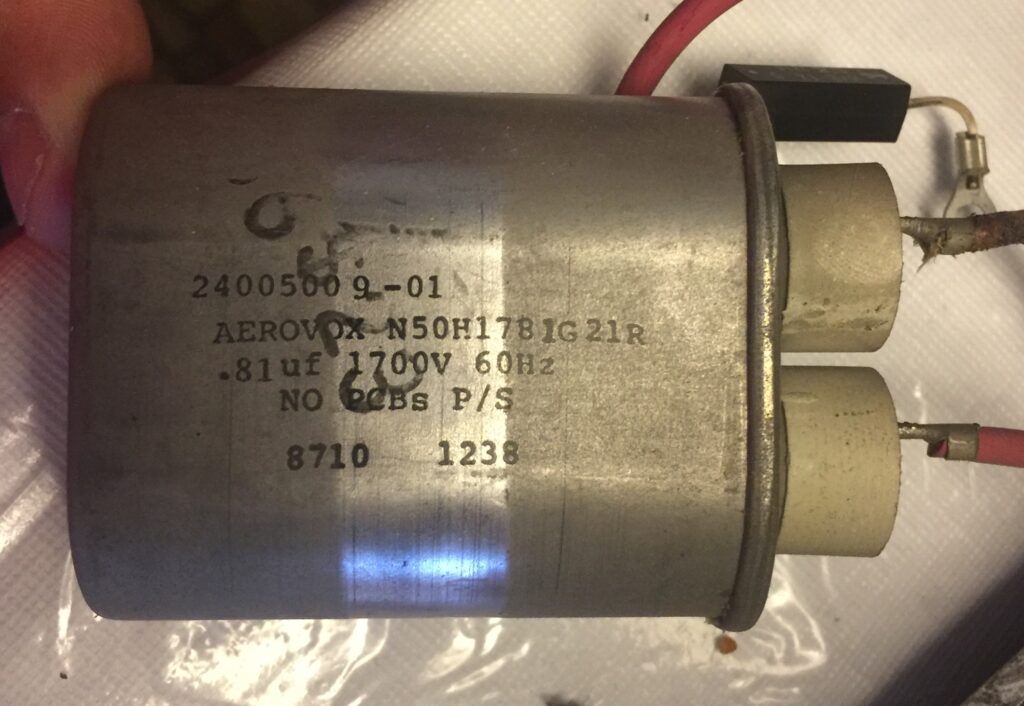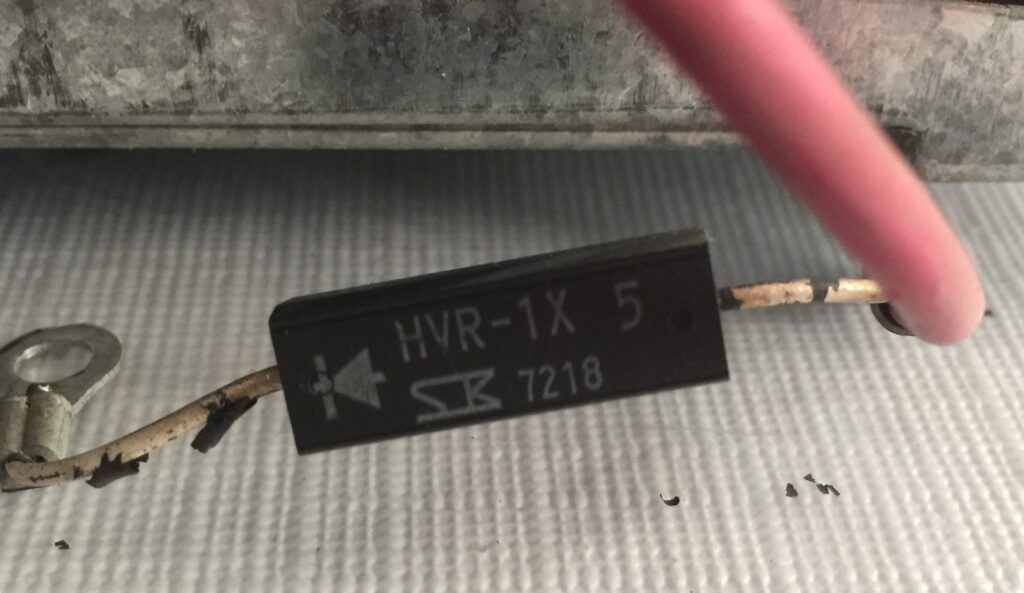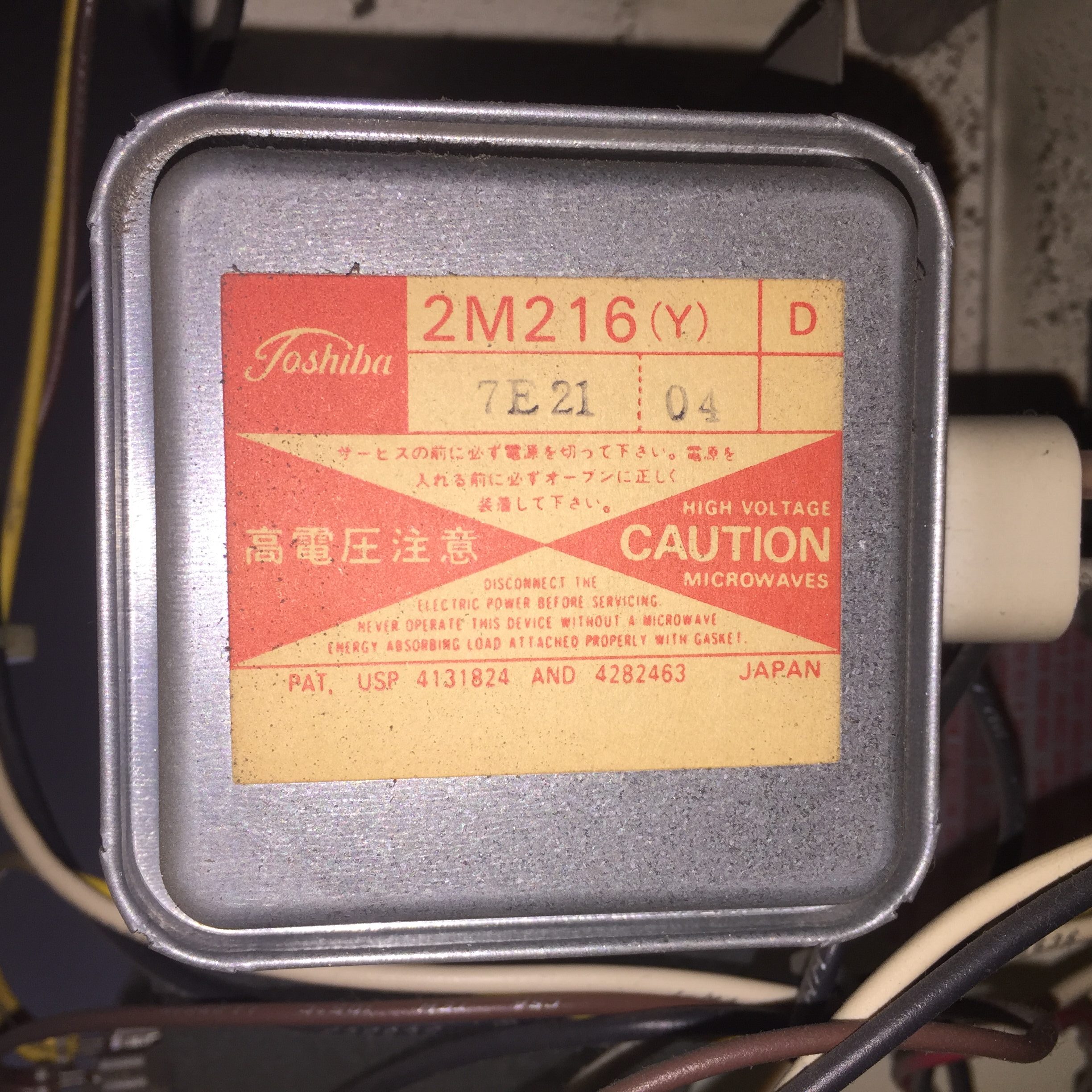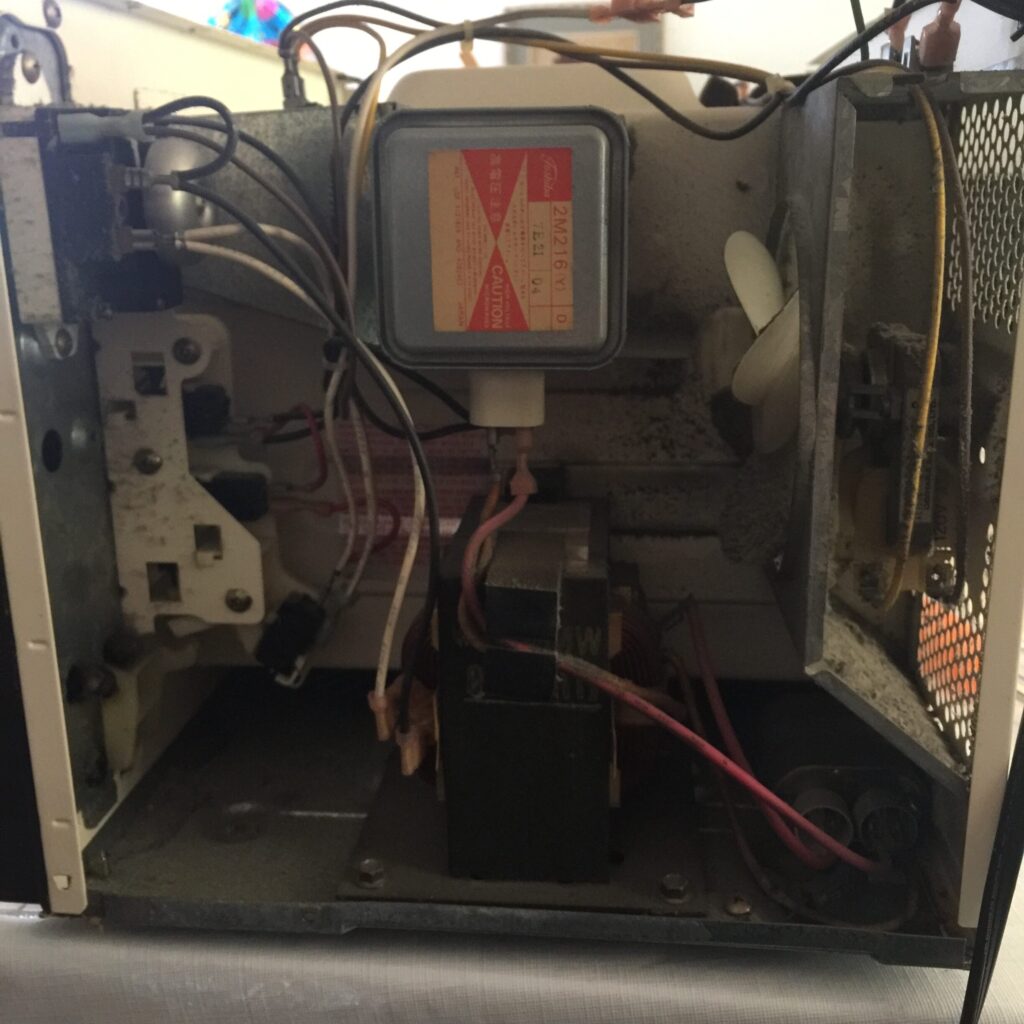I’ve never done this, but found a lot of information online. This is about my first attempt at repairing a microwave oven.
The microwave oven turns on, and the fan spins, and it makes the microwave oven sound, but the food doesn’t heat up.
The parts that drive the cooking are:
- switches
- the magnetron, which sends out the radio waves
- the capacitor, which helps boost the voltage, and is part of the AC-DC rectifier
- a high voltage diode, attached to the capacitor, which I assume is for rectifying the AC power into (sorta) DC
- the power transformer
Here are some photos of the parts:




A quick search for the magnetron found replacements priced from $9 to $22, depending on location and newness. I was surprised that they’re available 30+ years later — but it appears that this part hasn’t changed that much in this long.
The capacitor was cheap in China, at around $2. The price in the US is around $8 used, shipped, and $15 new, shipped.
Diodes should cost a couple dollars, maybe less.
I learned that the main cause of failures was the switches. The switches on mine were fine; it powered up and seemed to run the fans, but it never got hot. Checking the switches with a multimeter verified that they worked.
So, I started to work through testing the parts. First, the diode:
https://academy.fredsappliance.com/video/how-to-test-a-high-voltage-diode-from-a-microwave/
Video: https://youtu.be/F1mTElvwcBg
Video: https://youtu.be/PdwbjNCK-xw
Video: https://www.youtube.com/watch?v=a6lrKf2PdVA
Well, I didn’t have a 9v battery, so I need to get that first.
I got a battery, tested the diode, and it seemed fine.
Then I tested the capacitor, using these videos, I did all the tests, and they indicated a good cap. However, one of the tests was to use the cap tester – and mine showed 000 or 1. The one in the video showed some numbers.
Video: How to test capacitor https://www.youtube.com/watch?v=OFFzS1a6k5g
I had to check the tester, so I found an old capacitor and verified that the meter was working. However, the capacitor was a 25uF motor run capacitor that ran at a relative low voltage around 120 volts. The microwave used a 0.81uF that could go up to 1700 volts.
So my meter showing 1 or 0 wasn’t “wrong” – my capacitor was slow low that it might not be showing with my meter. The manual confirmed that for caps from 1 to 100 uF, the resolution is 1uF. In short, it’s not a great capacitance meter on this multimeter. (The brand is “Neoteck”, a $15 meter I got on eBay. It’s a basic DMM that’s a little nicer than the $8 generic meters from AliExpress. To do this diagnosis, I needed something that’s more sensitive.)
Then, I did some measurements on the magnetron. It seemed OK according to this video.
Video: https://www.youtube.com/watch?v=_Oriae3-N8c
I’m suspecting that it’s the capacitor. I am going to dig around and find a motor capacitor, and measure that.
References
This book explains everything! It’s amazing.
Book: http://repairfaq.cis.upenn.edu/sam/micfaq.htm
Video: https://www.youtube.com/watch?v=laoJyL4Zt-Y – How to troubleshoot your microwave.
This entertaining video is making me wonder about the switches some more. I’ll also go look for a second fuse.
This is the best video. It goes step by step into testing, in sequence.
